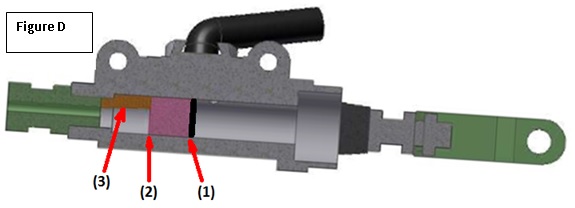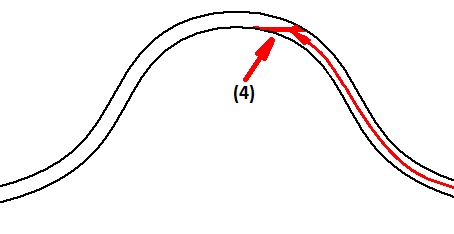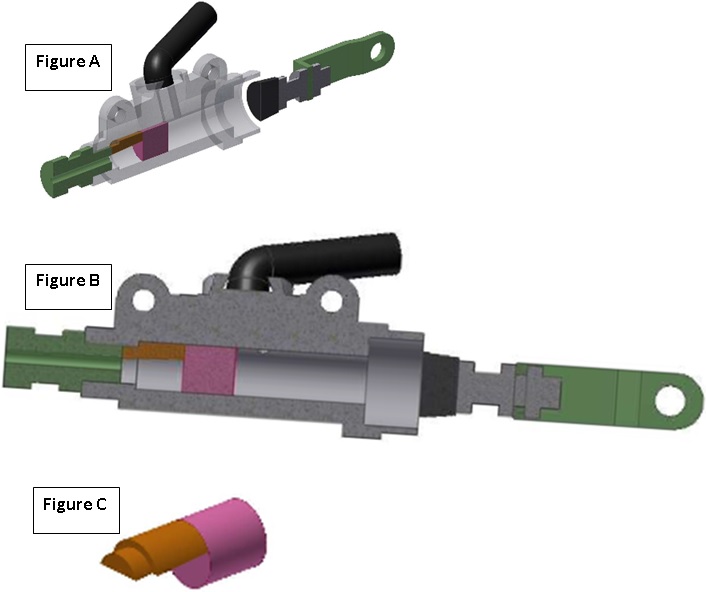
Ethier3
Expired Membership-
Posts
3 -
Joined
-
Last visited
Reputation
17 GoodPersonal Information
-
Name
Pierre Ethier
location
-
Location
St-Ferréol-les-Neige, QC, Canada
Converted
-
City
St-Ferréol-les-Neige
Converted
-
State/Province
QC
Converted
-
Home Country
Canada
Converted
-
Interests
2-Wheelers (Bicycles and Motorcycles), 3-Wheelers, Cross-Country and Mountain bicycle competitions
-
Bike Year and Model
Royal Star Tour Deluxe 2005 transformed to 3-Wheeler
-
Cleaning and Bleeding Brakes
Ethier3 replied to camos's topic in Venture and Venture Royale Tech Talk ('83 - '93)
Hello! Reality still always has the last word over theory. I don't know how this "line going from the rear to the front at the steering neck on the MK2" is installed and why the top bleeder is needed. Could it be that (a) the rear MC has to 'feed' two calipers - the rear one and one of the front ones - which would be at the limit of its 'one stroke volume' capacity, (b) or there's a fitting joining two steel tubes somewhere along the line, with consequent small air pocket similar to (3) in Figure D above, © or the tube line diameter changes along the line not due to steel tube changes, but due to an inserted fitting, which does not permit surface tension to act as a piston as shown at (4) of Figure E above, (d) the line going from the rear to the front goes higher than the rear master-cyclinder reservoir, which impairs MC refilling by the reservoir when releasing the rear brake pedal, (e) or as they say, all of the preceding answers intermixed to some degree? One sure thing, my trike has a 3 inch high loop such as Figure E above, going from the rear MC to the rear caliper, and I was able to get a solid pedal feel, which means all the air was kicked out. Also, I had first installed a 'T' with a line going from the rear to part of the front, but I was never able to get a solid rear brake pedal feel. The 1/2 inch diameter MC piston was never able to feed enough oil volume per one full stroke, for my rear and front caliper pistons. Pierre Ethier near Quebec City, QC -
Cleaning and Bleeding Brakes
Ethier3 replied to camos's topic in Venture and Venture Royale Tech Talk ('83 - '93)
Hello! Reality always has the last word over theory. So if you’ve observed that the air was bled by this Zero Pressure Method, then the theory must be corrected or, at least, more thought has to be put into the way the observations are made and the way the theory is applied. Now if the master cylinder piston pushes really fast on the oil, does it have a chance to carry along the air with it and thus bleed the brake? Looking at Figure D above, the piston at black line (1) may go as fast as it wants to position (2), but there is no way the air in (3) will be carried along, or pulled along by friction, towards the calipers to be bled. This said, you could have a bump along the brake line such as on Figure E below: If oil is pushed in this brake line by the piston from the right towards the left, along the red arrow against an air pocket, there will be some surface tension at point (4), at the oil-air intersection. Since brake tube diameters are small (about 1/16 inch – 1,6 mm), the viscous oil will not be able to go under the air along the tube. This surface tension will make the oil act itself as a piston pushing the air towards the left. So no air pocket will be left in the tube, when you pump the rear brake pedal. It’s easier to imagine grease being pushed from the right along the red arrow, it becomes obvious that this viscous grease will push all the air out towards the left. Now could the oil in Figure D act as grease and push all the air (3) out, I doubt it although a little bit of oil could stick on the inner walls due to viscosity and replace a little bit of the air pocket. My experience with my 3-Wheeler rear brake is that it did not remove the air, even though I really tried hard pressing a lot of times on the rear brake pedal. And it’s when I unscrewed the green fitting that I was able to bleed this air out and get a beautiful hard pedal as I had originally. This also said, it’s obvious that if you have a ‘powerful’ vacuum source, you both remove the air and replace it with oil: The atmospheric air pressure acts on the oil top surface in the master-cylinder reservoir, and pushes oil inside the system to fill this vacuum. If your vacuum source generates an ‘Interstellar Vacuum’ (as between Eart and Mars), no doubt the air pocket (3) will be reduced to nearly nothing, and be replaced by the oil ‘sucked’ from the master-cylinder reservoir. So then pumping the brake pedal will help, but it may not even be needed. My Mityvac could not create such a vacuum. Pierre Ethier -
Cleaning and Bleeding Brakes
Ethier3 replied to camos's topic in Venture and Venture Royale Tech Talk ('83 - '93)
Thanks for all the good posts on brake bleeding that I found on this Venture Rider forum. This is my first post and I’m not sure if this thread is the best one for what I want to bring up. But it’s about Brake Bleeding, so I’m throwing it here. Many have reported having no problem or, oppositely, lots of problems bleeding the Royal Star brakes. I have an explanation to this unpredictable behavior and suggestions to avoid it. I personally had a hard time bleeding the rear brake of my Yamaha Royal Star Tour Deluxe (RSTD 2005) home-made 2 Front-Wheels trike. My trike uses the original motorcycle parts for the rear brake, except for the rear disc being of a different diameter, which makes no difference for bleeding compared to regular RSTDs or Ventures of the same generation. I modeled the original rear master-cylinder on a CAD system to get a clearer picture: Figure A shows a ‘perspective’ cutaway view of this rear master-cylinder (excluding the piston) so you may recognise it better. Figure B shows the same cutaway view enlarged to better see the inside. The right is towards the motorcycle front. And the inside piston is still not being shown for clarity. Figure C shows further enlarged and in Magenta-Pink, the maximum volume pushed by a full piston stroke. In normal usage, brake oil comes down the black-elbowed tube on top. When the rear pedal pushes towards the rear or the left, it is this maximum Magenta-Pink volume that will go towards the rear or the left, to the rear caliper. The problem that I found out is that there is a fitting (green on the left of Figure B), that only has a small axial hole. So if you dismantled the master-cylinder or removed this fitting for any reason, there will be an air pocket (Orange-Brown color) trapped in the master-cylinder. This air pocket is small (0,5cc), but this maximum volume of oil pushed also is small (1,7cc), because of the small 1/2 inch diameter MC piston. This air pocket is thus about 1/3 of this maximum oil volume pushed. So this tiny air pocket is in fact ‘huge’. So when pushing on the rear pedal, you will compress this air pocket, and you will definitely feel a rear-pedal sponginess. What may account for the apparent unpredictable behavior of brakes being easy or hard to bleed, might simply be that some may have or may not have dismantled the master-cylinder fully. So they may or may not have left this air pocket in the brake system. Also, some mechanics simply are careful with such issues and know the trick of leaning the master-cylinder while bleeding (explained below). I was surprised that my mountain bicycle mechanic knew that trick. Once the air pocket problem is known, many solutions exist: When manufactured, the Yamaha people might have used a powerful vacuum source to extract from the rear caliper, as much air as possible while ‘pulling’ the oil from the rear master cylinder reservoir to this rear caliper. But not everyone has such a powerful vacuum source and a Mityvac hand pump may not be able to extract enough air. Mine could not do the job. Also, you can simply unscrew the green fitting (on the left of Figure B) to let some air out while pumping the rear pedal, as in a ‘normal’ bleeding procedure. This may still leave a little air (0,06cc) 3% of max volume pushed (The top of the Orange-Brown color air pocket). Or better as I did: Dismount the master-cylinder to have the left (or rear) end up, while you push the piston to push the trapped air up and out along the brake line. Obviously, you must then continue bleeding your rear caliper to get this air out. Sometimes, peculiar ideas can bring up unexpected solutions, so I will add that if you don’t want to dismount your rear MC, you could also hang your motorcycle by the rear in order to get the rear master-cylinder straight-up. If you ever try this, make sure you do it safely. Once this air pocket was eliminated: Tadam! It was a pure beauty to feel the rear pedal becoming hard again as originally. I have not dismantled my handlebar front master cylinders, so I don’t know if a similar entrapped air problem could also happen. One sure thing, the handlebar MCs are easy to dismount from the handlebar, in order to turn around in any direction, and bleed the front brake and clutch systems. Please note that Reverse-Brake-Bleeding or Speed-Bleeders can be helpful, but you can understand that they would have not helped me with the problem described above. Also please note that in order to make my trike, I used the following parts of my Yamaha Royal Star Tour Deluxe (RSTD 2005): The original rear brake system Pedal-MC-Caliper, except for the rear brake disc. The engine. The handlebar with clutch and front brake master cylinders. The electric wiring with front and rear flashers. The rear suspension shock. The saddlebags. So all the remaining parts are still nearly new at 3159 km (1963 miles) and are available as a whole: Chassis, front fork, axle, wheel, tire, brake discs, calipers and front headlight. Rear suspension, axle, wheel, tire, brake disc. RSTD gas tank and fairings. They are available as a whole for whatever fair price you may offer. Pierre Ethier Eng., Quebec City, Quebec



